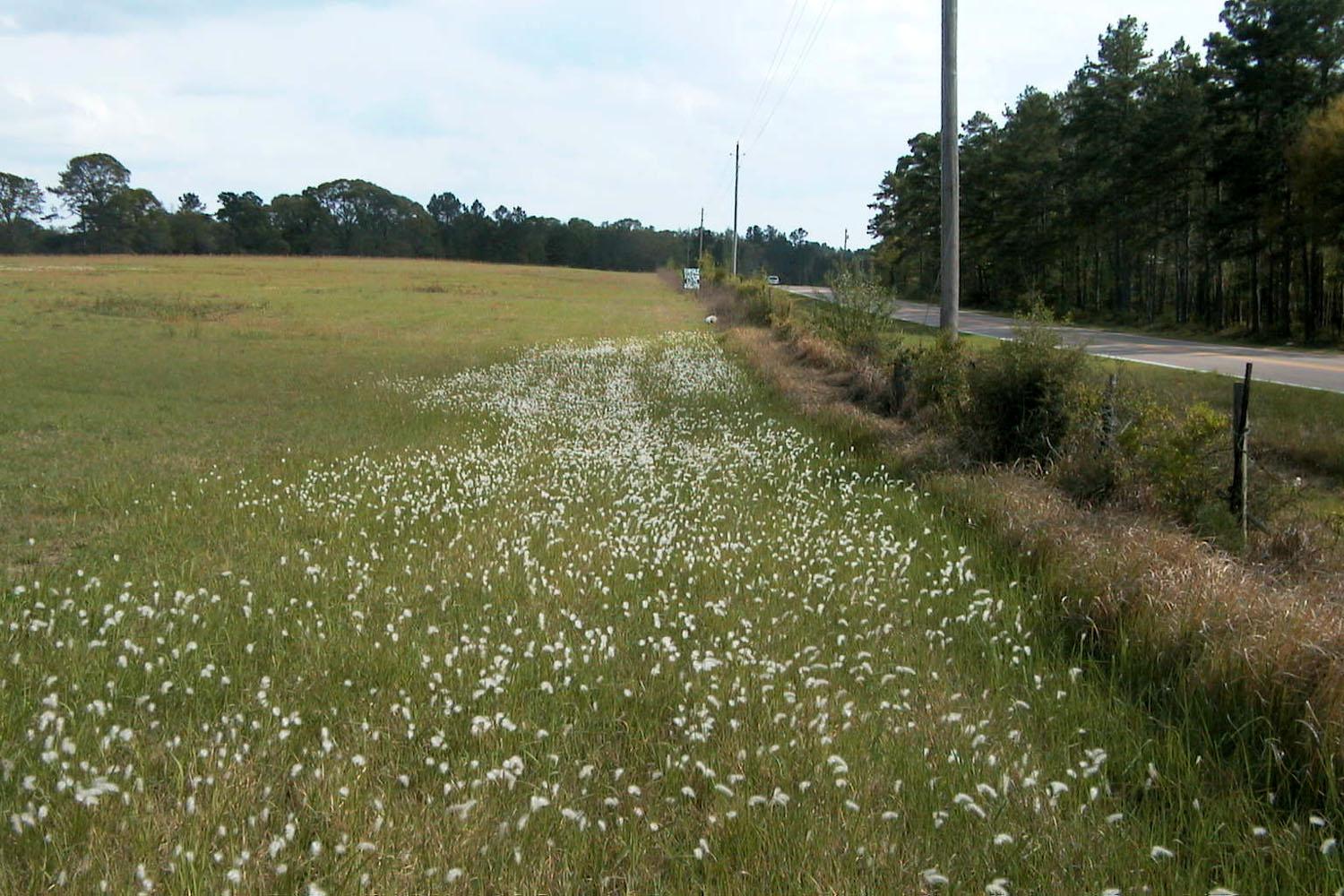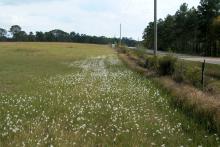Information Possibly Outdated
The information presented on this page was originally released on September 19, 2003. It may not be outdated, but please search our site for more current information. If you plan to quote or reference this information in a publication, please check with the Extension specialist or author before proceeding.
Landowners battle cogongrass spread
MISSISSIPPI STATE -- An invasive weed with no known value has made its way across half the state and shows no signs of letting up.
Cogongrass competes with desirable grasses and wins the battle for nutrients, but it is a very poor forage. Mississippians are learning the hard way that it is very difficult to keep this grass at bay.
John Byrd, Extension weed scientist with Mississippi State University, said the weed invades low-maintenance areas or those not in cultivation. It out-competes other grasses, yet provides nothing of value.
"It can release chemicals into the soil that inhibit the growth of other plants," Byrd said.
The weed spreads through wind-blown seeds and by rhizomes, a thick system of underground, horizontal stems capable of producing roots and shoots. It is difficult to destroy, and mowing and pesticides only temporarily slow its spread.
"Roundup and Arsenal will kill cogongrass for a growing season, but each node on the rhizome acts as a barrier to herbicide movement," Byrd said. "We'd like to find a herbicide that would slip through the nodes and kill a large section of the rhizome."
Herbicides applied in the spring just before bloom can prevent the weed from producing viable seeds, but it does not give long-term control.
Researchers are continuing to evaluate the effect new herbicides have on cogongrass. They are also looking at ways to modify the growing environment of cogongrass, such as by making changes in mowing frequency or soil fertility, to see if they can make it less competitive.
Byrd said researchers in Mississippi and other states are looking at ways to battle this weed. They are isolating particular pathogens found on some plant populations to see if these can inhibit its spread.
"We are seeing a pathogen this year on the seeds that prevent the seedling from becoming established," Byrd said. "This is helping from a biocontrol spread, but the majority of cogongrass spread occurs through rhizomes."
Some cost-share programs are available this year to landowners fighting congongrass. Byrd said the National Resource Conservation Service, the Mississippi Department of Agriculture and Commerce and the Mississippi Forestry Commission all are helping landowners fight cogongrass on their property.
But so far, it appears the most successful fight against cogongrass is preventing it from getting established.
"Sanitation is critical to preventing the spread of cogongrass," Byrd said. "Don't bushhog cogongrass when it is blooming because the seeds can contaminate the mowing equipment and spread to other areas."
Tillage equipment can carry rhizome-infested dirt to new areas, and logging equipment and logs dragged through cogongrass infected forests can spread the weed.
"Take the time to thoroughly clean all the equipment used in a cogongrass infected area before moving it to a new location," Byrd said.





